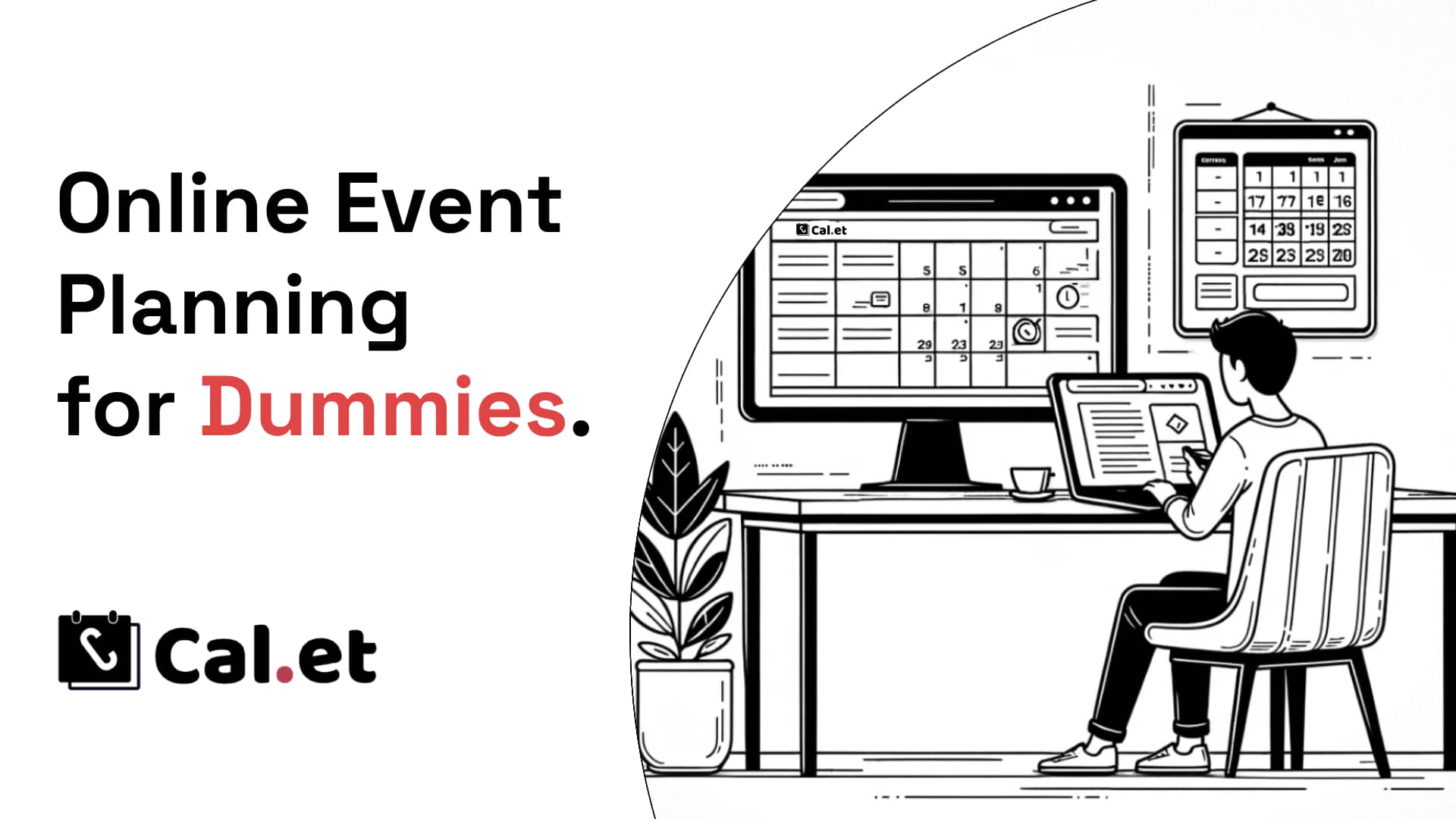Back to Blog
Online Event Planning for Beginners - Cal.et
Written by

Planning an online event can seem daunting, especially if you're new to the process. But don't worry—this guide will walk you through the basics and show you how to use CalGet to make your event planning a breeze.
1. Define Your Event Goals
Before diving into the logistics, it’s crucial to define the goals of your event. Are you looking to educate, entertain, or network? Knowing your objectives will help you structure your event effectively and measure its success.
2. Choose the Right Platform
Selecting the right platform is essential for a smooth online event. Popular options include Zoom, Microsoft Teams, and Google Meet. Make sure the platform you choose fits your audience size and event format.
3. Plan Your Agenda
An engaging agenda keeps your audience interested. Break your event into segments, such as keynote speeches, Q&A sessions, and networking breaks. This not only keeps the event dynamic but also allows for better time management.
4. Create Shareable Calendar Links with CalGet
One of the easiest ways to ensure your attendees don’t forget about your event is by using CalGet to create shareable calendar links. CalGet generates links that your attendees can add directly to their Google or Apple calendars. Here’s how:
Generate the Link: Input your event details into CalGet to create a calendar link.
Share the Link: Distribute this link via email, social media, or your website.
Enable RSVPs: With CalGet, you can also enable the RSVP option to track attendance and gather essential information like names and email addresses.
5. Promote Your Event
Promotion is key to a successful event. Use social media, email campaigns, and your website to spread the word. Embedding the CalGet link in your promotional materials ensures that potential attendees can easily add the event to their calendars and RSVP.
6. Test Your Tech
Technical difficulties can derail your event. Test your internet connection, audio, video, and presentation slides beforehand. Encourage your speakers and attendees to do the same to avoid any last-minute hiccups.
7. Engage Your Audience
Keep your audience engaged with interactive elements such as polls, Q&A sessions, and breakout rooms. This not only makes the event more interesting but also encourages networking and participation.
8. Follow Up
After your event, follow up with your attendees. Send thank-you emails, share recordings or materials from the event, and ask for feedback. CalGet makes it easy to export your RSVP list in CSV format, so you can efficiently manage your follow-up communications.
Incorporating CalGet into Your Event Planning
CalGet simplifies many aspects of event planning:
Seamless Calendar Integration: Ensure your event is added to attendees' calendars with a single click.
Effortless RSVP Management: Collect and manage RSVPs without hassle.
Easy Export: Export your RSVP list for follow-up and analysis.
Final Thoughts
Online event planning doesn’t have to be complicated. With clear goals, the right tools, and a bit of preparation, you can host a successful and engaging online event. Utilize CalGet to streamline your process, and you’ll be well on your way to becoming an online event planning pro. Happy planning!
Get Your Events on Everyone's Calendar.
Generate universal "Add to Calendar" links that work everywhere. Perfect for social media, emails, and websites.